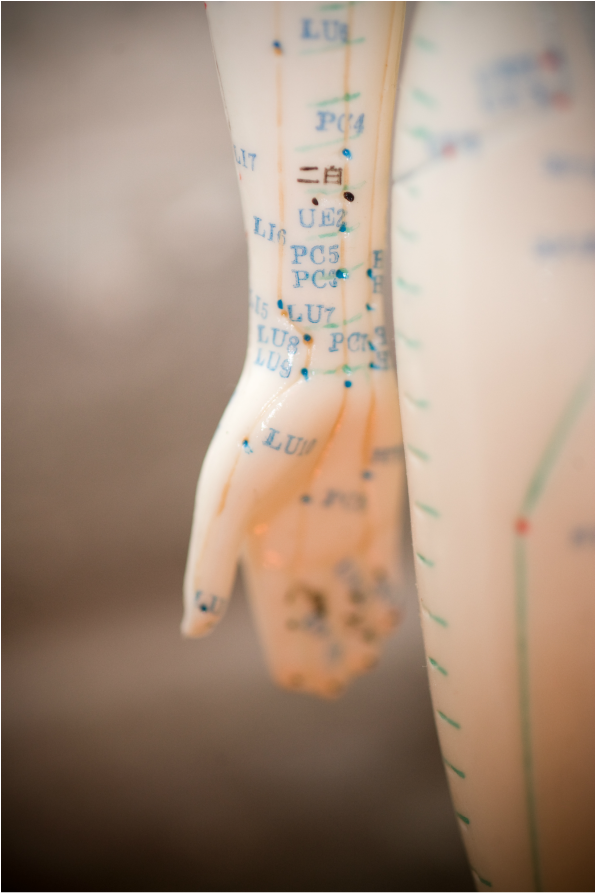 photo courtesy of Emma Freeman Photography
photo courtesy of Emma Freeman Photography By Autumn Compton
Many people have heard of Shiatsu, but still may not know exactly what it is. Having been a shiatsu practitioner for almost 15 years, and also a teacher of shiatsu to beginner students for over 5 years, I feel that I have a pretty good grasp on the subject at this point! So let me clarify what our Shiatsu practitioners at Wellness Minneapolis have to offer.
Shiatsu is a form of bodywork therapy that originates from Japan. Literally Shiatsu translates to finger pressure, which describes the technique. In addition to pressure applied to the body with thumbs, hands, elbows, knees or feet, Shiatsu also utilizes techniques such as kneading, stretching, vibrating, soothing and tapping the body. All of these techniques are applied to the patient in a rhythmic cadence in coordination with the client and practitioner’s breath, along pathways in the body called meridians. Like an acupuncturist, Shiatsu practitioners understand the traditional Chinese perspective of the body as a network of meridians through which Qi, or vital energy, flows. According to this perspective, health is present when there is abundant Qi in the body and unobstructed flow. When Qi is deficient or stagnant, imbalanced or obstructed, disharmony occurs and symptoms arise. These symptoms could include, among others, frequent colds or flu, regular headaches, aches and pains, digestive issues, sleep disturbances or anxiety. A Shiatsu therapist is trained to recognize patterns of disharmony, even prior to symptoms appearing, and will access the patients Qi through points along the meridians called vital points. Balance can then be restored through proper assessment and regular Shiatsu treatments, along with lifestyle and activity recommendations.
In Japan, shiatsu is actually considered primary healthcare, and is used to prevent and treat a variety of conditions that one may not consider when thinking of utilizing bodywork therapies. Shiatsu can be used in the treatment of a wide range of internal, musculoskeletal, and emotional conditions. It is thought to reduce muscle stiffness, stimulate the skin, aid digestion, and influence the nervous system. Shiatsu can treat a variety of chronic conditions, such as headaches, PMS, digestive disorders, fatigue, insomnia, fibromyalgia, stress, anxiety, and musculoskeletal pain, including low back, neck, and joint pain. It uses no oils, and therapy is applied while the patient wears soft, comfortable clothing. Most commonly my patients report that after a shiatsu they feel not only relaxed and looser, but also energized internally. This would be the effect of getting the Qi moving in the body. The ultimate goal I have with all of my patients is to support their body to come into a state of balanced Qi so it can do what it does best – be healthy and feel good!
Many people have heard of Shiatsu, but still may not know exactly what it is. Having been a shiatsu practitioner for almost 15 years, and also a teacher of shiatsu to beginner students for over 5 years, I feel that I have a pretty good grasp on the subject at this point! So let me clarify what our Shiatsu practitioners at Wellness Minneapolis have to offer.
Shiatsu is a form of bodywork therapy that originates from Japan. Literally Shiatsu translates to finger pressure, which describes the technique. In addition to pressure applied to the body with thumbs, hands, elbows, knees or feet, Shiatsu also utilizes techniques such as kneading, stretching, vibrating, soothing and tapping the body. All of these techniques are applied to the patient in a rhythmic cadence in coordination with the client and practitioner’s breath, along pathways in the body called meridians. Like an acupuncturist, Shiatsu practitioners understand the traditional Chinese perspective of the body as a network of meridians through which Qi, or vital energy, flows. According to this perspective, health is present when there is abundant Qi in the body and unobstructed flow. When Qi is deficient or stagnant, imbalanced or obstructed, disharmony occurs and symptoms arise. These symptoms could include, among others, frequent colds or flu, regular headaches, aches and pains, digestive issues, sleep disturbances or anxiety. A Shiatsu therapist is trained to recognize patterns of disharmony, even prior to symptoms appearing, and will access the patients Qi through points along the meridians called vital points. Balance can then be restored through proper assessment and regular Shiatsu treatments, along with lifestyle and activity recommendations.
In Japan, shiatsu is actually considered primary healthcare, and is used to prevent and treat a variety of conditions that one may not consider when thinking of utilizing bodywork therapies. Shiatsu can be used in the treatment of a wide range of internal, musculoskeletal, and emotional conditions. It is thought to reduce muscle stiffness, stimulate the skin, aid digestion, and influence the nervous system. Shiatsu can treat a variety of chronic conditions, such as headaches, PMS, digestive disorders, fatigue, insomnia, fibromyalgia, stress, anxiety, and musculoskeletal pain, including low back, neck, and joint pain. It uses no oils, and therapy is applied while the patient wears soft, comfortable clothing. Most commonly my patients report that after a shiatsu they feel not only relaxed and looser, but also energized internally. This would be the effect of getting the Qi moving in the body. The ultimate goal I have with all of my patients is to support their body to come into a state of balanced Qi so it can do what it does best – be healthy and feel good!
| |


 RSS Feed
RSS Feed